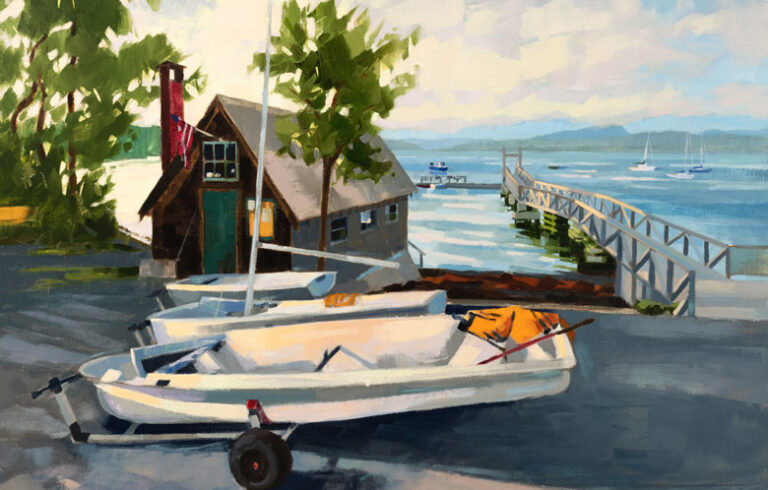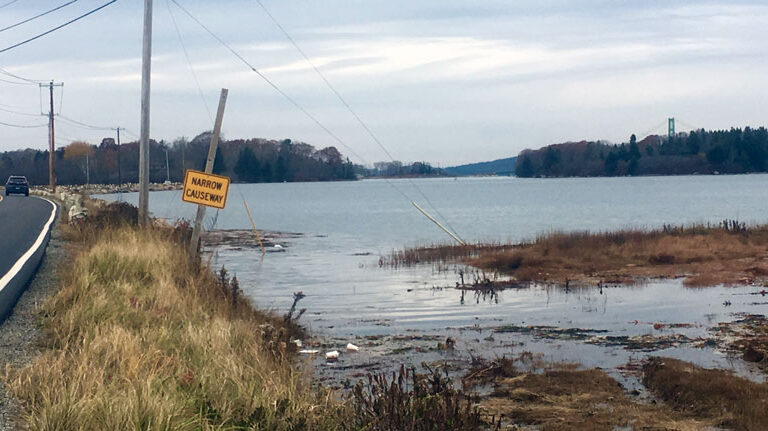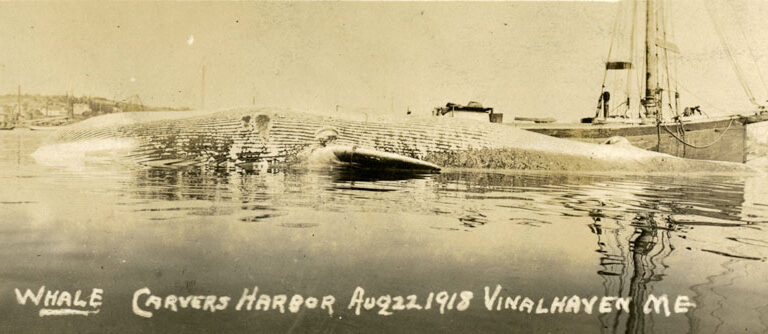The U.S. is a minor aquaculture producer, ranked 17th on a global scale, but it is the leading global importer of fish and fishery products. Approximately 90 percent of the seafood we eat comes from abroad, over half of it from aquaculture.
A lot of the salmon we’re buying isn’t from our waters; it’s shipped across thousands of miles from Norway, Chile, Scotland, and even China. American Aquafarms intends to change that.
Earlier this year, we filed a draft lease application with the Department of Marine Resources (DMR) for two 60-acre sites in Frenchman Bay. Just 20 acres of these sites would be for our clean, closed-pen systems and an active sea farm.
In this small corner of the ocean, representing a tiny fraction of Frenchman Bay, we estimate we can produce up to 66 million pounds of healthy fish per year without impacting the seabed, air or water quality. The remaining 100 acres would be shared with our local lobsterman, fishermen, and those using the water for recreation.
Our clean, closed-pen, ocean-based system addresses major challenges in the traditional aquaculture industry…
American Aquafarm’s applications are subject to Maine’s rigorous, multi-step process for reviewing new aquaculture projects. This science-based, decision-making protocol looks after our precious natural assets while strengthening Maine’s maritime industry and, at the same time, allowing it to diversify.
In addition to DMR, the Maine Department of Environmental Protection and the Army Corps of Engineers will also put our proposal through rigorous review, ensuring that we follow Maine’s strict regulations and protect the state’s environment while inviting public involvement in the
process.
American Aquafarms is confident our project will meet these exacting standards and lead the way in what’s next for our waterfront industries.
Our clean, closed-pen, ocean-based system addresses major challenges in the traditional aquaculture industry by controlling waste and preventing escapes. It eliminates the threat of sea lice and reduces the need for harmful chemicals.
Perhaps most importantly, it raises fish in their natural habitat—the ocean. Further, our project is engineered to be low-profile, quiet, and as invisible to the naked eye as possible.
We believe our project will complement Maine’s maritime heritage and strengthen our working waterfronts, while expanding production of high-quality, sustainable seafood.
Ultimately, we plan to establish a hatchery, fish farm facilities, and a state-of-the art processing plant at the site of the historic Stinson Cannery in Prospect Harbor. American Aquafarms will need the workforce necessary to fill the year-round, high-quality jobs we’re creating, and we’re already working on collaborative efforts with state educational institutions to help develop a qualified aquaculture workforce.
We know that Mainers are ready to continue working on the water but need the opportunity necessary to make that a reality. The announcement that the USDA is investing $500,000 in an aquaculture workforce pilot program at Washington County Community College demonstrates there will be Mainers ready with the exact technical skills necessary to fill these roles.
And more recently, the Maine Aquaculture Association released a set of occupational standards for marine farming—the first such benchmarks in the country.
American Aquafarms wants to be a part of this next chapter of Maine’s coast. We look forward to working with community leaders, organizations, and education institutions to ensure our project creates employment and learning opportunities for this generation and those that follow.
As we navigate the well-designed process set forth by the DMR for aquaculture, we know there will be questions. We are committed to listening, to making improvements, and meeting the high standards that Maine demands. Ultimately, this project—and a successful aquaculture
industry across the state—will result in a stronger, more diversified coastal economy and a healthier, sustainable environment for us all.
Tom Brennan is director of project development for American Aquafarms.





